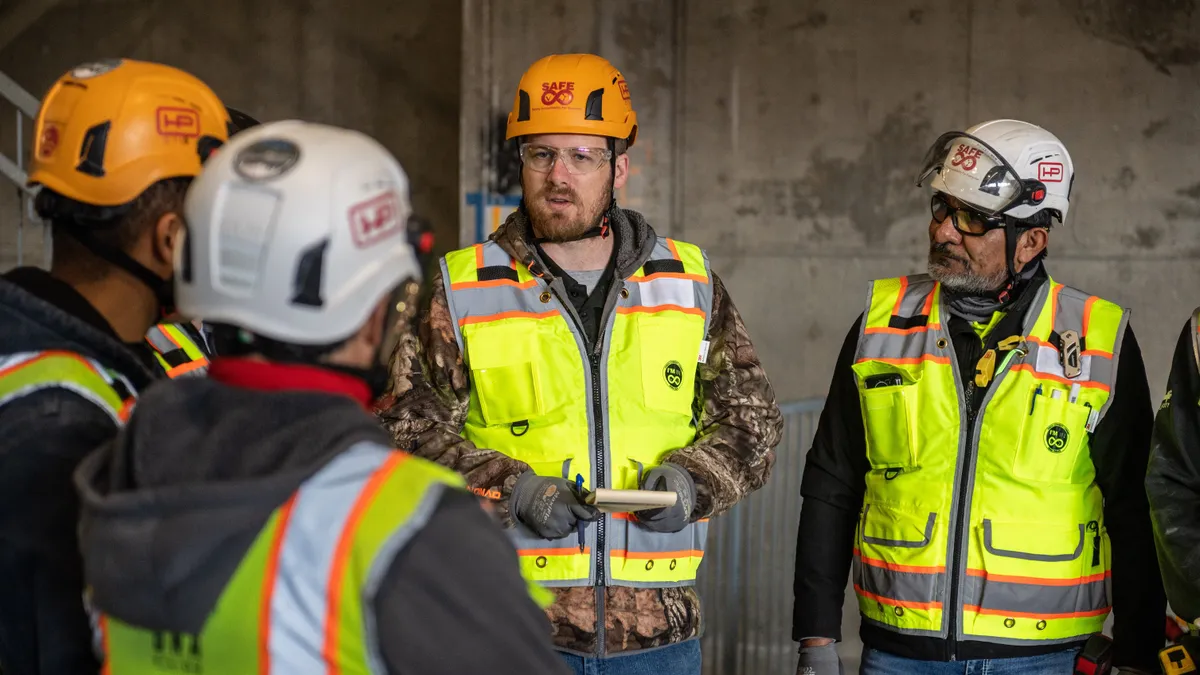The foundation of the construction industry is the people, the craft workers, who are on the job every day. More than 10.7 million people were employed in craft roles in 2023 with the demand continuing to grow. The unemployment rate in the construction industry fluctuates monthly, and in December 2023 the rate was 4.4 percent, which is higher than the national unemployment rate of 3.7 percent during the same time period. Office and skilled craft workers hold challenging roles and without these jobs, the construction industry would falter. Creating a system where every person is engaged and valued continues to become a bigger priority every year across the industry.
Every Voice Matters
Craft workers are the frontline of construction, with unique, first-hand knowledge of the work happening on the job site. This knowledge includes safety measures that are being taken, the effectiveness of communication between craft workers and management onsite, the efficiency of the team members and more. These insights can bring a valuable perspective to the safety and success of each project. They can also create opportunities to empower every voice in the workplace and demonstrate the value of those voices. Encouraging everyone to participate in safety meetings, pre-task planning or setting project goals and expectations shows how every individual and voice is heard and supported. The trust resulting from valuing and engaging every team member can result in safer job sites and more efficient work.
Engaging Team Members
The demand for skilled craft workers continues to grow with more than 400,000 jobs per month remaining unfilled in 2023. If this demand continues to increase and the number of workers continues to decrease, the foundation of the industry is at risk. It is crucial to put safety first and value every voice. With a safe environment where employees feel confident that they are engaged, valued and heard, the jobs become more attractive.
By creating an environment where everyone is engaged, there are opportunities to learn from every person within the organization. Human and Organizational Performance (HOP) is gaining attention in the industry as a different way to approach safety. The National Safety Council (NSC) defines HOP as “an operating philosophy combining human factors engineering with organizational psychology and leads to better, more efficient, more resilient and safer workplaces where employees and leaders are both engaged and valued by each other and the organization.” Author Todd E. Conklin, Ph.D. discusses five key concepts that play a direct role in creating an accepting and comfortable work environment for all team members.
- The understanding that people are fallible and that everyone makes mistakes;
- Placing blame on individuals for mistakes doesn’t fix anything;
- Learning and improving are vital to growth on the job site;
- Context drives behavior; and
- Leadership response to failure matters.
When these concepts are consistently applied, leaders build trust and confidence between team members. This trust allows honest communication and genuine learning to take place, which facilitates the removal of barriers that may be preventing safe work in the field such as the identification and correction of organizational weaknesses that may lead to unsafe conditions or competing priorities, and earlier identification and mitigation of error-likely situations.
There are tools and programs available like the Craft Voice in Safety (CVIS), OneVoice, etc. that, when implemented, give craft workers a direct line to communicate with executives. The mission of OneVoice, for example, is “to create a culture where everyone has a voice. In this program, craft is taking care of craft in a partnership with management through ownership, communication and prevention to achieve the common goal of zero injuries. The mission allows us to directly connect the expertise of our craft with the commitment of our project leaders, creating an environment of empowerment and open communication ultimately leading to improved outcomes.” The missions of CVIS and similar programs are complementary.
Creating a Stronger Industry
Construction Safety Week, the annual nationwide week-long initiative, will take place May 6-10. As companies incorporate craft engagement into their programs there are several examples of ways they can engage. At Construction Safety Week, we provide tools that companies can use throughout the year or as inspiration for additional engagement opportunities. Some of these include Toolbox talks, encouraging personal connections between team members at every level, understanding the work-life balance for everyone and ensuring there is open communication and mental health resources made available and encouraged for use.
In 2024, Construction Safety Week and OSHA are teaming up to bring awareness to stop falls and injuries on the job site by calling for the largest industry-wide construction stand-down ever held. The alignment between Construction Safety Week and OSHA brings the industry together in a new and impactful way, reinforcing our commitment to creating a positive safety culture with craft engagement. With so many people participating in the stand down on May 8 (or a dedicated time during the week), we can draw more awareness than ever to the importance of safety in the industry and demonstrate how every person has a valuable voice that should be heard.





